Resources
About Us
Sustainable Fashion Market by Product Category (Apparel, Footwear, Accessories, Home Textiles), Business Model (Traditional, Circular, Rental, Subscription), Material Type, Price Point, Distribution Channel, End User, and Geography – Global Forecast to 2032
Report ID: MROTH - 1041473 Pages: 312 Apr-2025 Formats*: PDF Category: Others Delivery: 24 to 72 Hours Download Free Sample ReportReport Overview
This comprehensive market research report analyzes the rapidly expanding sustainable fashion market, evaluating how eco-conscious alternatives are transforming traditional fashion manufacturing and retail to reduce environmental impact while meeting evolving consumer preferences. The report provides a strategic analysis of market dynamics, growth projections till 2032, and competitive positioning across global and regional/country-level markets.
Market Dynamics Overview
Key Market Drivers & Trends
The overall sustainable fashion market is primarily driven by growing consumer awareness and demand for ethical products, stringent regulatory pressure on textile waste and chemicals, and increasing corporate sustainability initiatives and ESG commitments. The adoption of digital technologies for supply chain traceability is transforming transparency practices, while biomaterials and next-generation sustainable textiles are gaining significant traction. Social media influence has accelerated sustainable fashion adoption, particularly among younger demographics, while on-demand production and digital sampling are reducing overproduction and associated waste. Carbon neutrality and climate positive commitments are pushing manufacturers to develop more environmentally responsible alternatives.
Key Challenges
Despite growth prospects, the overall sustainable fashion market faces challenges including higher production costs and price premiums limiting mass adoption, supply chain complexity and transparency challenges, limited availability of sustainable raw materials at scale, consumer confusion about sustainability claims (greenwashing), and balancing sustainability objectives with fashion trends. Scaling sustainable practices while maintaining profitability remains a significant hurdle, while standardization of sustainability metrics and certifications presents challenges for industry-wide adoption.
Growth Opportunities
The sustainable fashion sector is experiencing strong growth, driven by several key opportunities. Circular business models and closed-loop systems are gaining momentum, enabling extended product lifecycles and unlocking new revenue streams. Expanding adoption in emerging markets presents significant avenues for growth, while the integration of digital technologies to enhance supply chain transparency remains a largely untapped area with substantial potential. Strategic collaborations and partnerships across the value chain are fostering innovation, and alternative models such as rental, resale, and recommerce are outperforming traditional retail in terms of growth.
Market Segmentation Highlights
By Product Type
Based on product type, the apparel segment currently dominates the overall sustainable fashion market, due to growing consumer adoption of everyday wear and activewear as a primary category. Core products include organic cotton t-shirts, recycled polyester activewear, and hemp-based casual clothing. However, the Footwear segment, particularly athletic shoes made from recycled and bio-based materials, is projected to grow at the highest growth rate through 2032, as innovations in plant-based leather alternatives and biodegradable components are transform this resource-intensive category. The Accessories segment including bags, wallets, and jewellery, witnessing significant growth during the forecast period, while Home Textiles, represent an emerging opportunity as sustainable practices extend beyond clothing.
By Business Model
Based on business model, the traditional retail segment accounts for the largest share of the sustainable fashion market, driven by established brands shifting their product lines toward environmentally responsible alternatives. Circular and recommerce models are gaining significant traction, supported by growing consumer acceptance of second-hand fashion and the rise of digital platforms enabling seamless resale transactions. This segment is projected to experience the highest growth over the forecast period, as resale platforms scale and rental services expand beyond occasional or event-based use. Direct-to-consumer sustainable brands, along with made-to-order and on-demand production models, also contribute considerable market value and show strong growth potential. Additionally, subscription-based models are emerging as promising solutions within specific niche markets.
By Material
Natural Fibers holding the largest market share of the sustainable fashion market, with organic cotton emerging as the dominant sub-segment. Its growth is driven by broad consumer familiarity, wide application across apparel categories, and well-established supply chains that support scalability. Recycled Materials segment represent rapid growth, with recycled polyester leading in volume due to its cost-effectiveness, performance comparable to virgin fibers, and alignment with circular economy goals. The demand for reduced environmental impact in activewear and casualwear is further propelling this segment. Regenerated Fibers like TENCEL™ (Lyocell) and Modal represent significant growth supported by strong sustainability credentials—such as closed-loop production processes—and rising adoption in premium and mid-tier fashion categories. However, Innovative bio-based synthetics, including emerging materials like mushroom leather and algae-based textiles, are expected to achieve the highest growth rate through 2032. This segment growth is primarily driven by increased investment in R&D, advancements in scalability, and growing commercial interest from brands seeking alternatives to traditional leather and plastics.
By Price Point
Mid-Range price products currently leading the sustainable fashion market, offering an ideal balance of affordability, quality, and durability. This positioning resonates strongly with environmentally conscious consumers who are unwilling to compromise on style or performance. The premium/luxury price products segment represents a significant share of the sustainable fashion market, mainly driven by early adoption of sustainability initiatives, strong brand influence, and the use of cutting-edge sustainable materials. High-end consumers are increasingly valuing ethical sourcing and transparency, supporting ongoing growth in this category. However, the mass market segment is expected to grow at the highest growth rate through 2032. This segment growth is primarily driven by major retailers integrating sustainable practices into their core operations and benefiting from economies of scale, making sustainable options more affordable and accessible to a broader audience.
By Distribution Channel
Online retail holds the largest share of the sustainable fashion market. This dominance is primarily driven by the rise of direct-to-consumer (DTC) models, which allow brands to communicate sustainability messages more effectively, control customer engagement, and build trust through transparent digital experiences. Offline retail channel is experiencing strong growth, particularly through department stores that contribute significant sales volume. Additionally, specialized sustainable fashion boutiques are gaining traction by offering curated, immersive shopping environments that highlight ethical values and product origin. Recommerce platforms are estimated to grow at the fastest rate during the forecast period, supported by digital innovations that simplify the resale process and by increasing consumer comfort with purchasing pre-owned fashion, driven by affordability, sustainability, and access to premium brands. However, Direct-to-consumer channels also show substantial growth potential, as they enable brands to bypass traditional intermediaries, reduce costs, and maintain full control over the customer journey and sustainability storytelling. This model supports stronger brand loyalty and higher margins while aligning closely with eco-conscious consumer expectations.
By End User
Women’s segment holds the largest share of the sustainable fashion market. This growth is mainly attributed to the early adoption of sustainability across a wide range of women's apparel categories, coupled with strong consumer demand for ethically produced and eco-friendly fashion. The men’s segment is showing significant growth, primarily driven by rising interest in sustainable wardrobe essentials, such as basics and athletic wear. Increased awareness and a growing focus on quality, durability, and environmental impact are contributing to broader adoption among male consumers. However, Children’s sustainable fashion represents a high-potential growth area, particularly due to the rising demand for organic materials and chemical-free textiles. Parents are increasingly prioritizing safe, eco-conscious options for their children, driving steady market expansion. In addition, Unisex product offerings are also expected to experience the highest growth rate through 2032. This trend is supported by shifting consumer preferences toward gender-inclusive fashion, as well as the appeal of versatile, timeless, and sustainable wardrobe staples that support minimalist and environmentally responsible lifestyles.
By Geography
Europe leads the global sustainable fashion market due to robust regulatory frameworks, high consumer awareness, and well-established sustainability infrastructure. Countries like Germany have emerged as frontrunners, driven by eco-conscious consumers and government support for circular economy practices. North America with the U.S. benefiting from rapid innovation in direct-to-consumer sustainable brands, growing investor focus on ESG, and strong participation in resale and rental platforms. The Asia-Pacific region is projected to grow at the fastest rate through 2032, primarily driven by increasing environmental awareness, rising disposable incomes, and proactive government initiatives supporting sustainable manufacturing, especially in advanced markets like Japan, South Korea, and Australia. Latin America shows promising potential in markets such as Brazil and Chile, where rising climate consciousness, local sustainable materials, and community-driven fashion innovation are beginning to reshape consumer preferences and production practices.
Competitive Landscape
The global sustainable fashion market features a diverse competitive landscape with established multinational fashion conglomerates expanding sustainable offerings and independent sustainability-focused brands gaining significant market share.
Established Consumer Goods Companies
H&M Group maintains a leadership position among established players in the sustainable fashion market through its broad-based approach, leveraging its Conscious Collection and multiple subsidiary brands to offer sustainable products across diverse categories and price points. Kering SA has reinforced its competitive advantage by embedding strategic sustainability initiatives throughout its luxury portfolio, aligning environmental goals with brand equity and consumer expectations. Inditex, through its Zara Join Life program, continues to sustain market relevance by integrating organic and recycled materials at scale. These industry leaders differentiate themselves through their ability to operate at global manufacturing scale, invest significantly in R&D for sustainable material innovation, and capitalize on expansive distribution and retail networks to drive market penetration and consumer reach.
Independent Sustainable Manufacturers
Patagonia, Inc. has maintained its leadership position through pioneering circular business models and transparent supply chains, while Reformation has established strong brand recognition in sustainable women's fashion with its carbon-neutral manufacturing approach. Allbirds, Inc. has disrupted the footwear category with its natural and recycled materials, significantly reducing carbon footprints compared to conventional footwear. PANGAIA has differentiated itself through material innovation and scientific approach to sustainability. These independent brands compete primarily on sustainability innovation, supply chain transparency, and authentic mission-driven positioning.
The manufacturing landscape is characterized by increasing investment in regenerative agriculture and material science partnerships between textile innovators and fashion brands. Leading companies are increasingly adopting circular economy principles through take-back programs, repair services, and end-of-life solutions for garments.
As the market matures, key players will need to address scale challenges through production efficiency, develop materials that maintain performance and aesthetics while reducing environmental impact, and implement verifiable sustainability metrics to counter greenwashing concerns. Successful brands will balance environmental benefits with style, comfort, and price accessibility to drive mainstream adoption beyond environmentally conscious early adopters.
As the market matures, key manufacturers will need to address scale challenges through production efficiency, develop formulations that maintain efficacy while reducing environmental impact, and implement verifiable sustainability metrics to counter greenwashing concerns. Successful manufacturers will balance environmental benefits with product performance and price accessibility to drive mainstream adoption beyond environmentally conscious early adopters.
|
Particulars |
Details |
|
Number of Pages |
312 |
|
Format |
PDF & Excel |
|
Forecast Period |
2025–2032 |
|
Base Year |
2024 |
|
CAGR (Value) |
23.2% |
|
Market Size (Value)in 2025 |
USD 12.4 Billion |
|
Market Size (Value) in 2032 |
USD 48.4 Billion |
|
Segments Covered |
By Product Category
By Business Model
By Material Type
By Price Points,
By Distribution Channel,
Market by End User,
|
|
Countries Covered |
North America (U.S., Canada) |
|
Key Companies |
Patagonia, Inc., Eileen Fisher, Inc., Reformation, Stella McCartney, H&M Group (Conscious Collection), Inditex (Zara Join Life), Kering Group, PANGAIA, Veja, Allbirds, Inc., Outerknown, Everlane, Mud Jeans, The Renewal Workshop, Ecoalf, ABLE, ThredUP Inc., Rent the Runway, Inc., Girlfriend Collective, and Nisolo |
The global sustainable fashion market was valued at $10.2 billion in 2024. This market is expected to reach $48.4 billion by 2032 from an estimated $12.4 billion in 2025, at a CAGR of 23.2% during the forecast period of 2025--2032
The global sustainable fashion market is expected to grow at a CAGR of 23.2% during the forecast period of 2025--2032.
The global sustainable fashion market is expected to reach $48.4 billion by 2032 from an estimated $12.4 billion in 2025, at a CAGR of 23.2% during the forecast period of 2025--2032.
The key companies operating in this market include Patagonia, Inc., Eileen Fisher, Inc., Reformation, Stella McCartney, H&M Group (Conscious Collection), Inditex (Zara Join Life), Kering Group, PANGAIA, Veja, Allbirds, Inc., Outerknown, Everlane, Mud Jeans, The Renewal Workshop, Ecoalf, ABLE, ThredUP Inc., Rent the Runway, Inc., Girlfriend Collective, and Nisolo.
Major trends shaping the market include blockchain for transparency and authenticity verification, biomaterials and next-generation sustainable textiles, on-demand production and digital sampling, water conservation and chemical management initiatives, and carbon neutrality and climate positive commitments.
Based on product type, in 2025, the apparel category is expected to account for the largest share of the sustainable fashion market; based on business model, traditional retail (Sustainable Products) holds the largest share of the overall sustainable fashion market in 2025; based on material type, in 2025, natural fibers (particularly organic cotton) will dominate the material type segment market share; and based on distribution channels, online retail represents the largest market segment.
Europe leads the global sustainable fashion market, followed by North America, due to stringent regulations, advanced consumer awareness, and established sustainability infrastructure.
The growth of this market is driven by growing consumer awareness and demand for ethical products, stringent regulatory pressure on textile waste and chemicals, increasing corporate sustainability initiatives and ESG commitments, technological innovations in sustainable materials and processes, and influence of social media and sustainability movements.
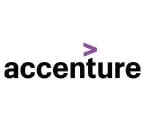
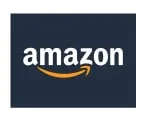
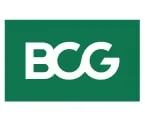
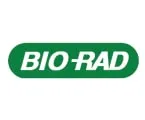
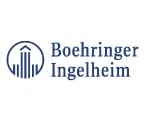



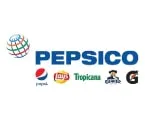
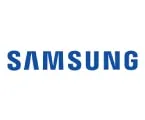
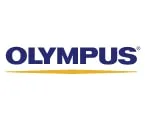

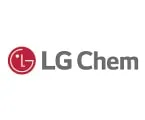
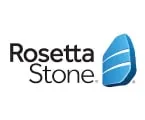


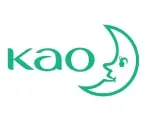



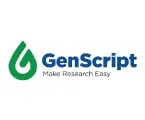
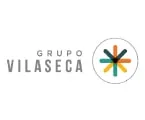


Published Date: Jun-2024
Please enter your corporate email id here to view sample report.
Subscribe to get the latest industry updates